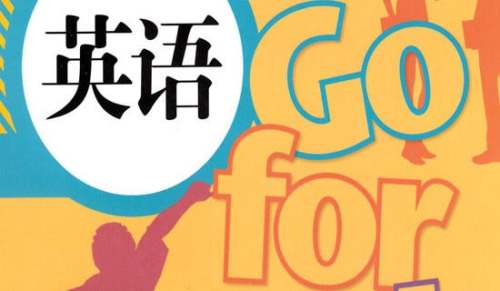- 相關(guān)推薦
英語(yǔ)四級(jí)翻譯精彩預(yù)測(cè)試題
In order to succeed, your desire for success should be greater than your fear of failure.以下是小編為大家搜索整理的英語(yǔ)四級(jí)翻譯精彩預(yù)測(cè)試題,希望能給大家?guī)?lái)幫助!更多精彩內(nèi)容請(qǐng)及時(shí)關(guān)注我們應(yīng)屆畢業(yè)生考試網(wǎng)!

part 1
古代的藝術(shù)家熱衷于畫被馴服的馬,畫家徐悲鴻卻對(duì)畫野馬情有獨(dú)鐘。這位國(guó)畫大師在法國(guó)進(jìn)修期間學(xué)習(xí)了馬的解剖,他花費(fèi)大量的時(shí)間觀察馬的動(dòng)態(tài)和表情。徐悲鴻畫的馬,有的飛奔,有的小跑,形態(tài)各異,非常有魅力。他畫的馬多是黑色,結(jié)合了中西方繪畫手法,線條和筆畫簡(jiǎn)單,但是每幅畫所畫的動(dòng)物卻都十分傳神。
【參考譯文】
Unlike ancient artists obsessed with saddled horses, Xu Beihong preferred feral and wild ones. Trained in France, the Chinese master studied equine anatomy, spending hours observing horses’ movements and expressions. Xu’s portrayals of horses galloping or trotting past, in a rich variety of poses, are some of the most captivating of their kind. Using mostly black ink, they combine the best methods from East and West. The lines and brush strokes are simple, yet invariable evoke the essence of the animals.
【重點(diǎn)詞匯】
熱衷于:be obsessed with; be wild about; be bound up in; be keen on; be on fire for; be enthusiastic about; be full of enthusiasm about
被馴服的:domesticated; saddled
對(duì)……情有獨(dú)鐘:have an affinity to sth. ; prefer
解剖:anatomy
馬的',馬科的,像馬的:equine
飛奔:gallop
小跑:trot
形態(tài)各異:in different shapes; in different poses; in a rich variety of poses
有魅力的:captivating; charming, attractive
筆畫:brush stroke
part 2
景泰藍(lán)(cloisonne)是一種起源于元代北京的獨(dú)特藝術(shù)。在明代的景泰年間,非常鐘情于青銅制造技術(shù)(bronze-casting techniques)的君王發(fā)展了色彩加工技術(shù),并且創(chuàng)造了迎合東方審美的.亮藍(lán)色。在一次加工技術(shù)的突破之后,此君王的大部分日常用具都由景泰藍(lán)制成。很快地,景泰藍(lán)在普通人當(dāng)中變得流行起來(lái)。在清朝,景泰藍(lán)得到了發(fā)展,并且達(dá)到了其藝術(shù)巔峰。顏色更加精美.使用范圍也擴(kuò)大了。
參考譯文
Cloisonne is a unique art form that originated in Beijing during the Yuan Dynasty.In the period titled“Jingtai”during the Ming Dynasty,the emperor who was very much interested in bronze-casting techniques improved the color process.and created the bright blue that catered to the Oriental aesthetic sense. After a processing breakthrough,most articles for his daily use were made of cloisonne.Cloisonne became popular among the common people soon.During the Qing Dynasty,cloisonne had been improved and reached its artistic summit. Colors were more delicate,and scope of use was enlarged.
難點(diǎn)注釋
1.第一句中,“起源于元代北京的”應(yīng)該使用定語(yǔ)從句,可譯為that originated in Beijing during the Yuan Dynasty。
2.第二句中,“非常鐘情于青銅制造技術(shù)的”是一個(gè)較長(zhǎng)的定語(yǔ),應(yīng)該使用定語(yǔ)從句,可譯為who was very much interested in bronze-casting techniques;“迎合”還可譯為appealed to;“東方審美”可譯為the Oriental aesthetic sense 。
3.第三句中,“加工技術(shù)的突破”可譯為a processing breakthrough。
4.第四句中,“在普通人當(dāng)中變得流行起來(lái)”可以用became popular among the common people來(lái)表達(dá)。
5.第五句中,“達(dá)到了其藝術(shù)巔峰”可以用reached its artistic summit來(lái)表達(dá)。
part 3
在中國(guó),北方的冬天在12月和3月之間,相當(dāng)寒冷(chilly)。北京的'氣溫不會(huì)在0℃以上,盡管通常會(huì)比較干燥和晴朗。長(zhǎng)城以北,在內(nèi)蒙古(Inner Mongolia)和黑龍江,要冷得多。北方的夏季在5月和8月之間。北京的氣溫偶爾會(huì)達(dá)到37℃,甚至更高。7月和8月同時(shí)也是這個(gè)城市的雨季。春秋季是游覽的最好季節(jié)。白天的氣溫會(huì)在21℃至29℃之間,而且雨水偏少。
參考譯文
In China,winters in the North fall between December and March and are incredibly chilly.Beijing's temperature does not rise above 0℃.although it will generally be dry and sunny.North of the Great Wall.into Inner Mongolia and Heilongjiang.it is much colder.Summer in the North is around May to August. Beijing’s temperature Can occasionally rise to 37℃and even higher.July and August are also the rainy months in the city.Spring and autumn are the best seasons for visiting it.Daytime temperatures are between 21℃and 29℃.and there is less rain.
1.第一句中,“在12月和3月之間”可譯為fall between December and March,此處fall意為“適逢,正當(dāng)(某日)”。
2.第二句中,“盡管通常會(huì)比較干燥和晴朗”為讓步狀語(yǔ)從句,可譯為 although it will generally be dry and sunny。
3.第三句中,“要冷得多”要用比較級(jí),可譯為it is much colder。
4.第五句中,“偶爾會(huì)達(dá)到”可譯為0ccasionally rise to。
5.第六句中,“雨季”可譯為rainy months。
6.第八句中,“白天的氣溫”可譯為daytime temperatures。
【英語(yǔ)四級(jí)翻譯精彩預(yù)測(cè)試題】相關(guān)文章:
最新英語(yǔ)四級(jí)翻譯考試題型預(yù)測(cè)10-26
英語(yǔ)四級(jí)翻譯考試模擬預(yù)測(cè)試題10-15
大學(xué)英語(yǔ)四級(jí)考試翻譯預(yù)測(cè)試題及答案07-30
2017年12月英語(yǔ)四級(jí)翻譯預(yù)測(cè)試題11-04
英語(yǔ)四級(jí)考試翻譯預(yù)測(cè)練習(xí)08-27
2017年6月英語(yǔ)四級(jí)翻譯考試預(yù)測(cè)試題10-27
2017年6月英語(yǔ)四級(jí)翻譯模擬預(yù)測(cè)試題08-17
英語(yǔ)四級(jí)翻譯模擬試題09-13
英語(yǔ)四級(jí)翻譯模擬試題成吉思汗講解及翻譯10-26
英語(yǔ)四級(jí)翻譯提分試題01-22